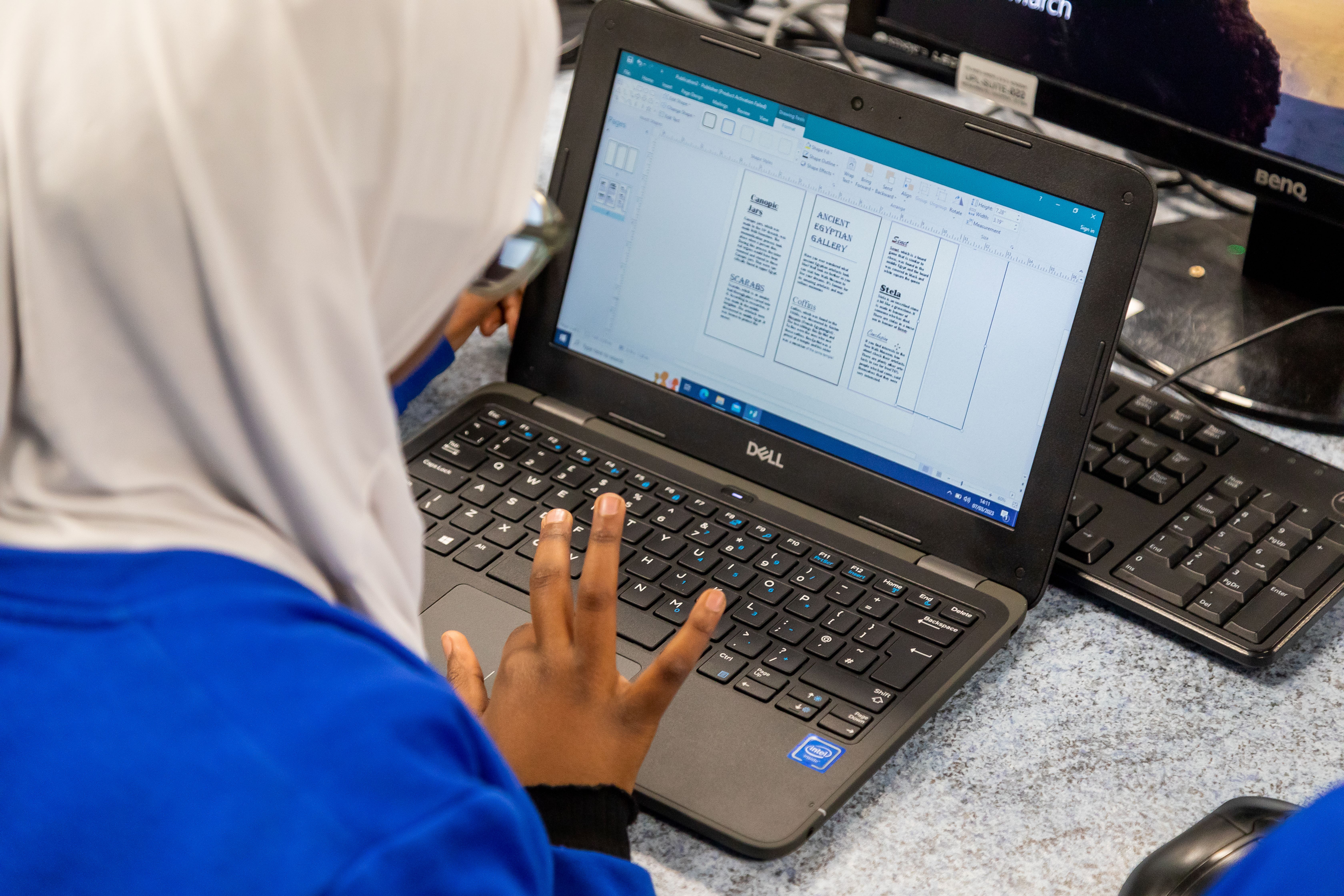
Year 3 have been getting to grips with the Scratch software, learning how to change background and sprites, and learning how to program basic movement.
Year 5 have been learning how systems work, including the input and output features. They then delved into how search engines work, designing an academy website where the academy name was deliberately used a lot to ensure that the website would feature highly on a list of search results.
Children using Scratch to program the quiz they designed..
On Thursday 1st September, the Year 3 children took part in their first introductory History session consisting of a carousel of 4 activities relating to the Stone Age – Jewellery Making, QR – Is it Stone Age? activity, Stonehenge collages and cave paintings.
The QR activity required children to work in pairs investigating the school playground area hunting for QR clues. They needed to scan the codes to discover pictures and decide together whether they were related to the Stone Age or not using Google Forms to input their answers. Children were able to reflect upon their answers due to self marking.
This week on Wednesday the Year 4s had Blockybots day. This was an immersive experience for children where they interacted with a range of robots and programmed their own robot device using the brilliant Lego WeDo 2.0. The children really enjoyed themselves as they loved seeing the end result of their lego face moving.